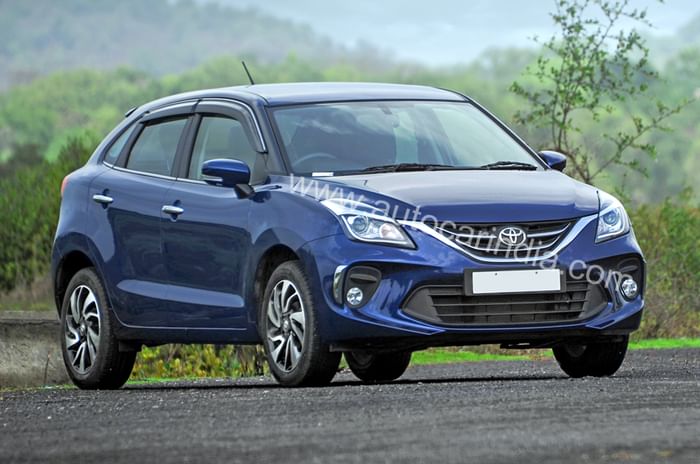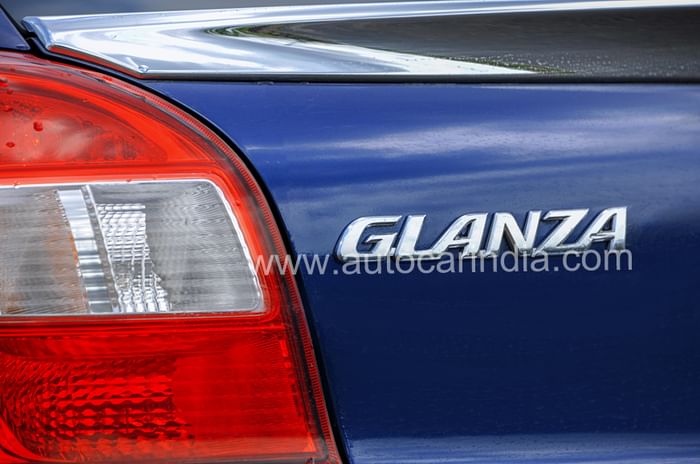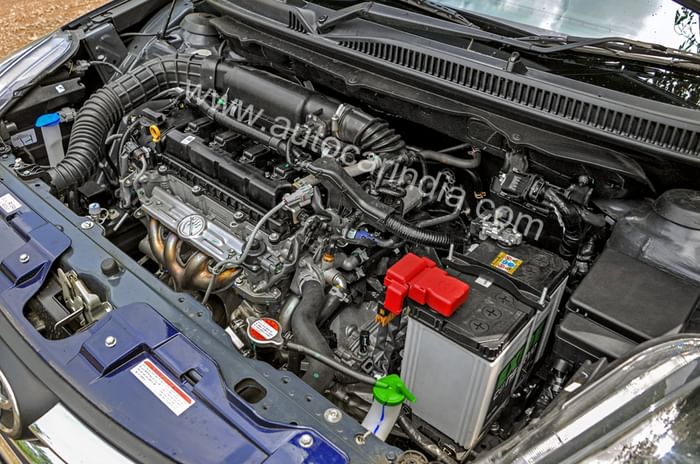What is it?
The Toyota Glanza is so similar to the Baleno in terms of exterior and interior design, you can't tell the difference between the two if you delete the badges. The paint shades, LEDs, headlamps, alloy wheels . . . they are all the same. In fact, the two cars are even manufactured on the same assembly line. Only the grille at the front is different.
The Glanza also shares its powertrain with its Maruti sibling. However, you can only have the Glanza with a petrol engine – either the standard 83hp, 1.2-litre K12M engine or Maruti's new 90hp, 1.2-litre K12N Dualjet motor (tested here), that also gets a bit of an e-boost from a mild-hybrid system.

Since we haven't driven or tested Maruti's new BS6-compliant, Dualjet smart hybrid petrol, let's take a bit of a deep dive. To begin with, the engine puts out 90hp – that is 7hp over the standard Maruti K12 engine – and the mild-hybrid engine also comes with a lithium-ion battery pack located under the front passenger seat. The Dualjet motor, as the name suggests, uses two injectors per cylinder instead of one, and, along with the mild-hybrid system, delivers significantly improved fuel efficiency. While the regular Baleno delivers 21.01kpl under test conditions, this engine gives 23.87kpl.

The greater efficiency isn't only down to the hybrid system that winds back the otherwise wasted energy to the battery. The new Dualjet engine also features greater thermal efficiency. For example, it has a more compact combustion chamber and a high compression ratio of 12:1. To help reduce the pinking or knocking associated with high compression ratios and compact combustion chambers, Suzuki has used an improved water jacket – the engine now gets oil cooling jets under the pistons – and, since the twin injectors are placed further down their own individual intake ports, fuel atomisation and cooling are better too. The Dualjet even uses a water-cooled EGR.
What's it like to drive?
Initial responses to a tap on the throttle are met with a fair bit of enthusiasm. And then when that little bit of e-boost comes in via the mild hybrid system, somewhere between 1,200 and 1,600rpm depending on the load, responses get marginally better. If you pay attention, you can even feel the extra drag every time you lift your foot off the accelerator, as the generator recuperates power and sends it back to the battery. And what's nice is that the info screen in the instrument panel tells you when the battery is charging or discharging.

While initial responses are good, the Dualjet engine in BS6 guise, however, doesn't feel as peppy in the midrange or as free-revving as the regular K12.
So while it has 7hp more, the Glanza is slower when it comes to the 0-100kph sprint and in-gear acceleration too. 13.56sec is how long it takes from 0-100. What's nice, however, is that the Dualjet seems to get an extra kick after 5,000rpm, and for the most part, power, performance and refinement are more than adequate. That said, it does sound slightly more throaty and coarse, and that nice, sporty snarl you get from a K12... some of that is missing here.

The steering seems to have been improved marginally, and the ride on the 195/55 R16 tyres is as good as ever. Those who prefer to be chauffeured around will also like the car's bump absorption characteristics.
What’s it like on the inside?
Apart from the badge on the steering, Toyota has not bothered with making changes to the Glanza’s interior. Everything from the dashboard layout, materials and design are taken as is from the Baleno. On the centre console is Toyota's version of the Smart Play, called the Smart Playcast, which again, is the same system with Apple and Android connectivity and still no in-car navigation.

The seats up front are broad and well bolstered. And those sitting in the back will appreciate the more-than-sufficient legroom and width of the wide cabin. And, as on the Baleno, the loading lip of the boot is high and the light build of the doors don't really inspire confidence.
Should I buy one?
Now for the million dollar question: Which one should you buy – the Toyota Glanza or the Maruti Suzuki Baleno? The Glanza is priced at between Rs 7.22 lakh and Rs 8.90 lakh, and that initially makes it look expensive. Truth is, both the G trim and the V trim are based on the top-two trims of the Baleno – the Zeta and Alpha - and the standard petrol-manual and CVT autos are identical in price.
The real advantage, however, is when you compare prices of the mild-hybrid versions. The Glanza G is a solid Rs 65,000 cheaper than the Baleno hybrid, and that's with no difference to the spec sheet or feature list. Also, another big advantage is that Toyota's warranty of 3 years/1,00,000km is significantly better than Maruti's at 2 years/40,000km.
So, in a nutshell, if you are looking for better fuel efficiency and a more competitive price, the Toyota Glanza with the mild-hybrid system and Dualjet engine is currently the better buy. Prices, Toyota says, are introductory.
Vehicle used in the review includes a few optional accessories.
Click here for Toyota Glanza prices, reviews, images, videos and more
Click here for Toyota India models, prices, reviews, images, videos and more








































